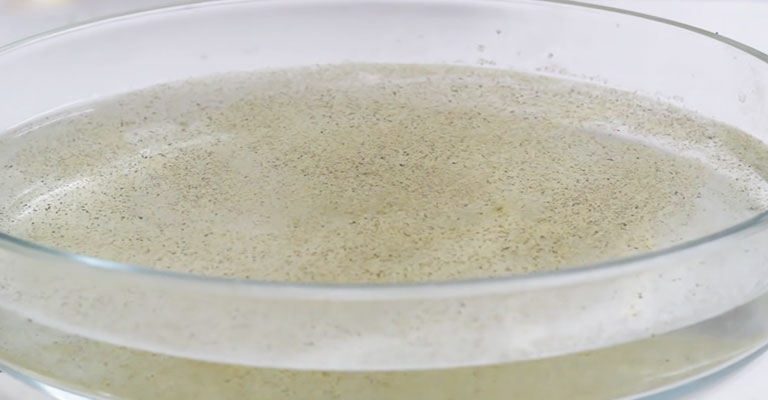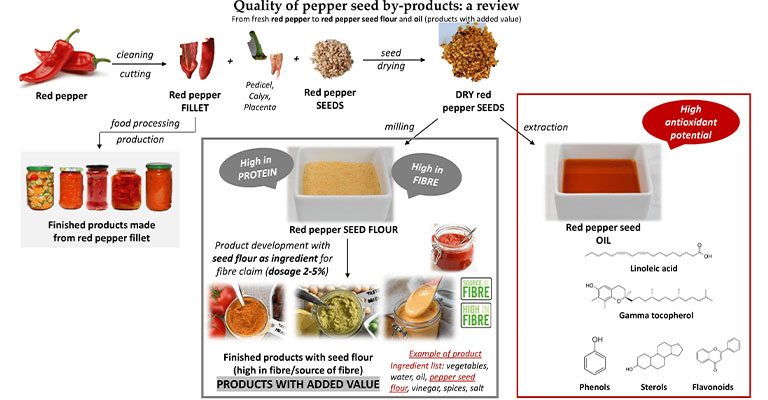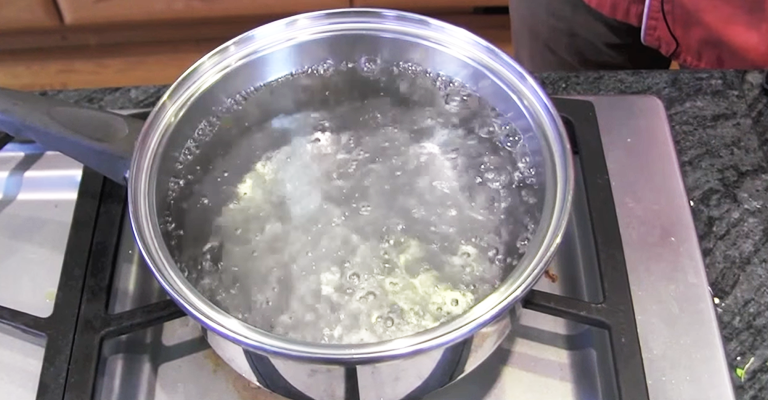Why Doesn’t Pepper Dissolve in Water?-Unraveling the Molecular Mystery
Pepper, a ubiquitous spice in culinary endeavors worldwide, possesses a curious property: it resists dissolving in water. This phenomenon is rooted in the intricate chemistry of both substances.
At its core, pepper’s insolubility is a consequence of its primary constituent, piperine. This compound, predominantly non-polar, lacks the charged attributes necessary for interaction with water molecules.
This introduction explores the molecular intricacies that underlie this culinary quirk, shedding light on the fundamental principles that govern solubility.
Delving into the interplay of molecular forces and structural attributes, we unravel why pepper remains an enigma to water, yet an indispensable flavor enhancer in kitchens across the globe.

Why Doesn’t Pepper Dissolve in Water?
Pepper, that ubiquitous spice found in kitchens worldwide, possesses a curious characteristic: it resists dissolving in water.
Pepper, in its typical form, doesn’t dissolve in water for several reasons:
Insolubility
Pepper is primarily composed of a compound called piperine. This compound is non-polar, which means it lacks a charge and doesn’t readily interact with water molecules, which are polar.
Since like dissolves like (polar substances dissolve in polar solvents, non-polar substances dissolve in non-polar solvents), piperine doesn’t mix well with water.
Intermolecular Forces
The intermolecular forces between water molecules (hydrogen bonds) are much stronger than the forces between water and piperine molecules.
This means that water molecules tend to stick together rather than interact with the piperine molecules, further preventing dissolution.
Molecular Structure
The molecular structure of piperine is not conducive to forming bonds with water.
It is a large, complex molecule with a long hydrophobic tail. This tail is made up of non-polar carbon and hydrogen atoms, which repel water molecules.
Particle Size
The size of pepper particles also plays a role. The particles of pepper are relatively large compared to the individual molecules of water.
For a substance to dissolve, its particles need to be small enough to be surrounded and carried away by the water molecules. Pepper particles are too big for this to happen effectively.
Hydrophobicity
Piperine, the main compound in pepper, is hydrophobic, meaning it repels water.
Hydrophobic substances tend to clump together and avoid contact with water. This property further hinders the dissolution of pepper in water.
Kinetic Factors
Even if there were some weak interactions between piperine and water molecules, the energy required to break the bonds between piperine particles and allow them to mix with water is too high.
This makes the dissolution process highly unfavorable and unlikely.
Lack of Ionization
For a substance to dissolve in water, it often needs to ionize or break apart into charged particles (ions). Piperine doesn’t readily ionize in water, which is another barrier to its dissolution.
Interaction Between Pepper and Water Molecules

The interaction between pepper and water molecules is primarily determined by the chemical properties of both substances.
Polarity Contrast
Water is a highly polar molecule. It has an oxygen atom that carries a partial negative charge, and two hydrogen atoms that carry partial positive charges.
This gives water a “polar” nature, where one end of the molecule is slightly negative and the other slightly positive.
Hydrophobic Effect
Piperine contains a long, hydrophobic tail. This tail is composed mostly of non-polar carbon and hydrogen atoms. Hydrophobic substances like piperine prefer to interact with other hydrophobic molecules rather than with water.
When pepper is introduced to water, the hydrophobic tails of the piperine molecules clump together, minimizing their contact with water.
Dispersion and Aggregation
In a solution, molecules are in constant motion. Water molecules, due to their polarity, can surround and “disperse” charged or polar molecules. However, they struggle to disperse non-polar substances like piperine.
Instead, piperine particles tend to aggregate, sticking together and forming clusters within the water.
Surface Tension
Water’s high surface tension is a result of the cohesive forces between its molecules. This property allows some substances, particularly those with low polarity, to “float” on the surface rather than sink or dissolve.
Pepper, being non-polar, often exhibits this behavior when introduced to water.
Limited Solubility
Even though there might be some weak interactions between water and piperine at the molecular level, these interactions are not strong enough to overcome the energy barrier required for full dissolution.
This leads to the limited solubility of pepper in water.
Alternative Solvents for Pepper

While water may not be an effective solvent for pepper due to its non-polar nature, there are several alternative solvents that can be used to extract flavors and compounds from pepper.
Here are a few examples:
Ethanol
Ethanol, commonly known as alcohol, is a versatile solvent that can effectively dissolve both polar and non-polar compounds.
It has the ability to extract essential oils and aromatic compounds from pepper, making it a popular choice for culinary and herbal extractions.
Acetone
Acetone is a polar aprotic solvent known for its ability to dissolve a wide range of organic compounds.
While not typically used in food applications, it can be employed in laboratory settings to extract various components from the pepper.
Oil
Oils are non-polar solvents, making them suitable for extracting non-polar compounds such as the essential oils found in pepper. Infusing oils with pepper can yield flavorful and aromatic culinary products, enhancing the taste of dishes.
Hexane
Hexane is a non-polar solvent commonly utilized in laboratory extractions. It excels at dissolving non-polar compounds, making it a suitable option for extracting specific components of pepper.
Ethyl Acetate
Ethyl acetate is a moderately polar solvent known for its versatility in dissolving a wide range of organic compounds. It finds applications in food and pharmaceutical industries for various extraction processes.
Glycerol (Glycerin)
Glycerol, a polar compound, can serve as a solvent, particularly in the production of herbal extracts and tinctures.
It is capable of extracting both polar and non-polar compounds, making it a versatile option for various applications.
Super Critical Carbon Dioxide
Under specific conditions of temperature and pressure, carbon dioxide transforms into a supercritical fluid.
In this state, it acts as a versatile solvent for a wide range of compounds, including those present in pepper. SC-CO2 extraction is employed in industries ranging from food to pharmaceuticals.
Vinegar
While not as potent a solvent as some of the others mentioned, vinegar, primarily composed of acetic acid, can be used to extract certain water-soluble compounds from pepper.
It imparts a distinctive flavor to the solution, making it a unique option for culinary applications.
Efficient Techniques for Pepper-Water Separation Post-Cooking
There are several effective methods to separate pepper from water after cooking.
Here are some commonly used techniques:
Filtration
Filtration involves passing the mixture through a fine mesh sieve or a layer of cheesecloth. As the liquid passes through, the solid pepper particles are trapped, allowing the water to pass through.
Decanting
This method relies on the natural settling of solid particles. After allowing the mixture to stand undisturbed, the pepper particles settle at the bottom. Carefully pouring off the water from the top separates the pepper from the liquid.
Centrifugation
In laboratory or industrial settings, centrifugation is a powerful technique. By rapidly spinning the mixture, centrifugal force causes the denser pepper particles to move away from the water, facilitating separation.
Evaporation
By applying heat to the mixture, the water molecules gain energy and transform into vapor, leaving the solid pepper behind. Once all the water has evaporated, the pepper can be collected.
Magnetic Separation
When the pepper particles have been coated with a magnetic material, a magnet can be used to attract and separate them from the water, exploiting their magnetic properties.
Distillation
This method involves heating the mixture to create vapor, which is then condensed back into liquid form. The water vaporizes and is collected, leaving the solid pepper behind.
Use of Solvents
For pepper containing essential oils or other soluble compounds, a suitable solvent can be employed. The solvent dissolves the pepper, leaving the water behind. The solvent can then be evaporated to retrieve the pepper.
Electrostatic Separation
In industrial settings, electrostatic techniques can be applied to separate particles based on their charge properties, effectively separating the pepper from the water.
Sedimentation
This technique relies on gravity. Allowing the mixture to stand allows the pepper particles, being denser, to settle at the bottom. This facilitates the pouring off of the water.
Use of Specific Equipment
Depending on the scale and context, specialized equipment such as centrifuges, separators, or filtration systems may be employed for more precise and efficient separation.
FAQs
Why doesn’t pepper dissolve in water?
Pepper doesn’t dissolve in water because it is primarily composed of a non-polar compound called piperine.
Can other solvents dissolve pepper?
Yes, other solvents like ethanol, acetone, or oil can dissolve pepper. These solvents have properties that allow them to interact with the non-polar components of pepper more effectively compared to water.
What happens when pepper is added to water?
When pepper is added to water, it does not dissolve but rather tends to float on the surface.
Why is pepper used in cooking if it doesn’t dissolve in water?
While pepper may not dissolve in water, it still imparts a strong, distinctive flavor to dishes. It is often used in cooking to enhance the taste of food.
Can you extract flavors from pepper without using water?
Yes, flavors from pepper can be extracted using alternative solvents like ethanol, acetone, or oil. These solvents are better suited for dissolving the non-polar compounds in pepper compared to water.
To Recap
Pepper’s insolubility in water arises from its fundamental molecular properties. The key factor is piperine, the primary compound in pepper, which is non-polar and lacks a charge.
Water, being a polar solvent, prefers to interact with molecules that possess charged regions. This polarity mismatch prevents piperine from readily mixing with water.
Additionally, piperine’s hydrophobic characteristics, complex molecular structure, and particle size contribute to its inability to dissolve.
While pepper doesn’t dissolve in water, its distinct flavor and culinary versatility have made it an essential seasoning in kitchens worldwide, demonstrating that solubility is not the sole criterion for a spice’s culinary value.
